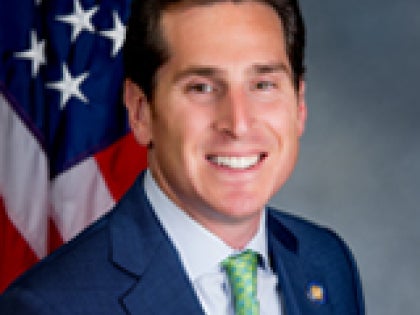
New York American Water to install smart water meters across Nassau County
Even as it moves to sell its Long Island service territory, New York American Water is pressing ahead with plans to replace all its 126,500 water meters in Nassau with new smart meters that constantly monitor customers’ usage.
The $40.8 million plan was approved by the state Public Service Commission last month, and meter replacement work is scheduled to start in May and continue through 2025, the company said. Notices to customers will go out this month.
The smart meters will track usage, along with suspected leaks, in real time throughout the day and report to the company using cellular technology. The meters will replace a different system known as AMR that was installed between 2001 and 2005 for most customers.
That system, which sends signals that can be captured by drive-by employees, relieved field service workers from having to read each meter. Those workers will remain with the company with more time to "focus on other service orders," New York American Water spokeswoman Lee Mueller said.
The cost of rolling out the smart meter network will begin appearing in customer bills as a system improvement charge starting in August 2021, the company said. Specific costs to customers aren't yet available.
State Sen. Todd Kaminsky (D-Long Beach) took issue with the eventual rate impact. “If the utility is comfortable with this rate structure then they should also be comfortable with providing advanced metering with no cost to the customer," he said.
The anticipated $5 million in savings over AMR meters will be included in the next rate case. Liberty Utilities has pledged to keep rates frozen until 2023.
In filings, the company said while it expects a 100% replacement rate of the old meters, it has contingencies for customers who want to opt out or whose meters are inaccessible.
Once smart meters are installed in a certain service territory, those who decline them will pay a $13.21 monthly charge for the company to read their meters manually and other expenses.
Those who don’t or can't grant access to their meter for replacement could be subject to a $25 no-access fee after three attempts by the company to replace the meter.
The company said it's "confident" it can avoid having to levy the fee by securing appointments or guiding the "few" customers who opt out through the opt-out process.
PSEG Long Island is in the midst of a transition to smart meters across LIPA’s 1.1 million customers. National Grid converted to AMR drive-by meters several years ago.
Under the new American Water system, customer water meters are connected to a communications system that monitors usage and alerts customers to "suspected leaks, high usage or backflow," Mueller said. Water usage data are logged every 15 minutes and sent to the company four times a day.
The system uses "secure commercial cellular network" to send encrypted data back to the company. Radio frequency signals from the meters are "well below the levels most people come in contact with on a typical day in their home," the company said.
In company literature, New York American Water indicated it was expecting some pushback from at least one customer segment.
“NYAW understands that seniors may not be receptive to [smart-meter] technology and/or have the tools to access the data provided by AMI,” says a company rollout plan filed with the state.
The company “wants to engage with this target audience to demonstrate how paper billing, live customer service and other customer support functions will not be impacted” by the transition to smart meters.
New York American Water also said it plans to demonstrate how it can use data to "alert customers to high water usage and continuous flow even if they have not signed up for alerts” from the company’s website.
Mueller said Liberty Utilities, which intends to purchase New York American Water, is “aware of and in agreement” with the smart meter rollout.
David Denenberg, a utility watchdog at Long Island Clean Air Water and Soil, said he was “unimpressed” by the company’s rollout plan. He cited one of the primary reasons for rolling it out: notifying customers of higher usage and rates.
“To get even higher rates so that we can be notified of our higher rates just doesn’t impress me,” said Denenberg, a former Democratic Nassau County legislator.